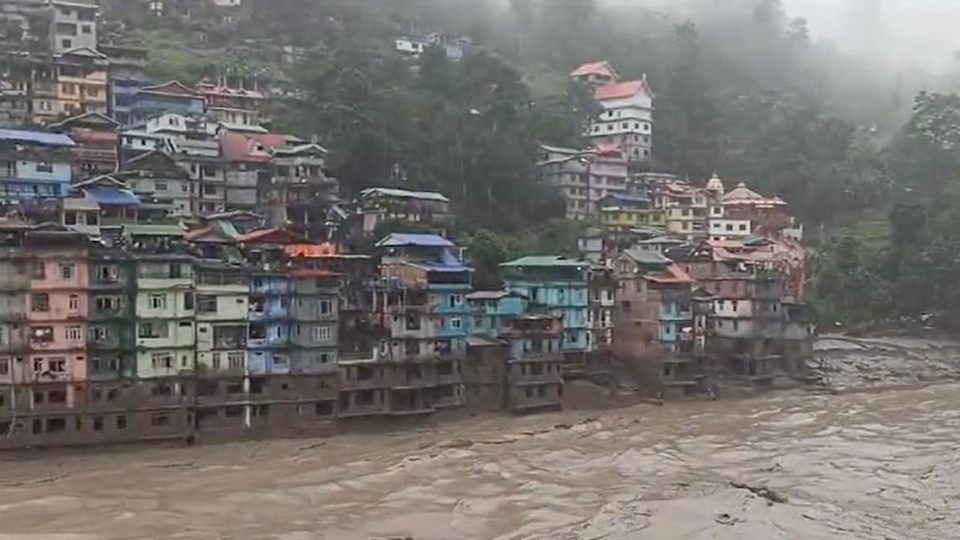In the southern part of Sikkim’s Lonak Lake, a dam has ruptured, causing a perilous situation in the Tsomgo region, which extends into both Sikkim and West Bengal. Concerns are mounting in northern Sikkim’s Tsomgo Lake, where tension is palpable, despite efforts by the Sikkim government to reassure the public. Authorities have evacuated residents from the villages of Thangu, Chala, and Yathang, situated about 12 kilometers from the lake, for their safety. Alerts have also been issued in the surrounding areas, including Gangtok’s Singtam, Mangang’s Dikchu, and Pakyong’s Rangpo IBM zone. Two days ago, the police administration in northern Sikkim’s Mangang had already issued a warning about the situation.
According to the Sikkim administration, surveillance via satellites began on Friday night, continuing into Saturday morning at 7:30 AM. Tsomgo Lake stands at an altitude of 16,404 feet in northern Sikkim. Experts note that while the lake’s area may be smaller than the southern Lonak, its depth is significantly greater. Satellite observations indicate that the lake’s water level has risen by nearly six meters in the past few days, causing widespread concern. At a depth of 594 feet, Tsomgo Lake hosts a glacial moraine, which adds another thousand meters to its elevation. Specialists suggest that due to warming, the moraine has fractured. The lake’s depth has further increased due to recent snowmelt.
Experts fear that under increasing pressure, the lake could rupture at any moment. This could lead to a Glacial Lake Outburst Flood (GLOF), potentially affecting areas downstream to the Duars in West Bengal. If the Duars also face a flood, it could lead to even greater calamity.
Arindam Chaudhuri, a researcher in the Geography department of Shillong’s North Eastern Hill University, stated, “Tsomgo Cho Lake is a glacial moraine lake located in the southeastern foothills of Mount Khangchendzonga. It stands at an elevation of 6,902 meters above sea level. It is considered a potential hazardous glacial moraine lake in northern Sikkim.” This information was also published in the GeoCarto International journal in 2022, under the supervision of renowned geologists Professor Sunilkumar De (NEHU, Shillong) and Professor Milap Chand Sharma (JNU, Delhi). Continuous precipitation has caused the lake’s water level to rise. As a result, there is a possibility of increased pressure on the Moran barrage, potentially leading to its breach and causing another Glacial Lake Outburst Flood event.
Though the Sikkim administration’s top officials have stated, “No new concerns have arisen recently. The Sikkim government, however, has been vigilant regarding the potential rise in water levels in Tsomgo Lake since the natural disaster in Hyderabad.” In 2013, the National Remote Sensing Centre (NRSC) in Hyderabad first alerted the Sikkim government about the Lonak Lake. In 2017, Sikkim successfully released water from the lake. Since then, there have been no further incidents. This information arrived in Delhi just last Wednesday. During a meeting led by India’s Home Minister Amit Shah, renewed attention was given to the increasing importance of Tsomgo Cho.

